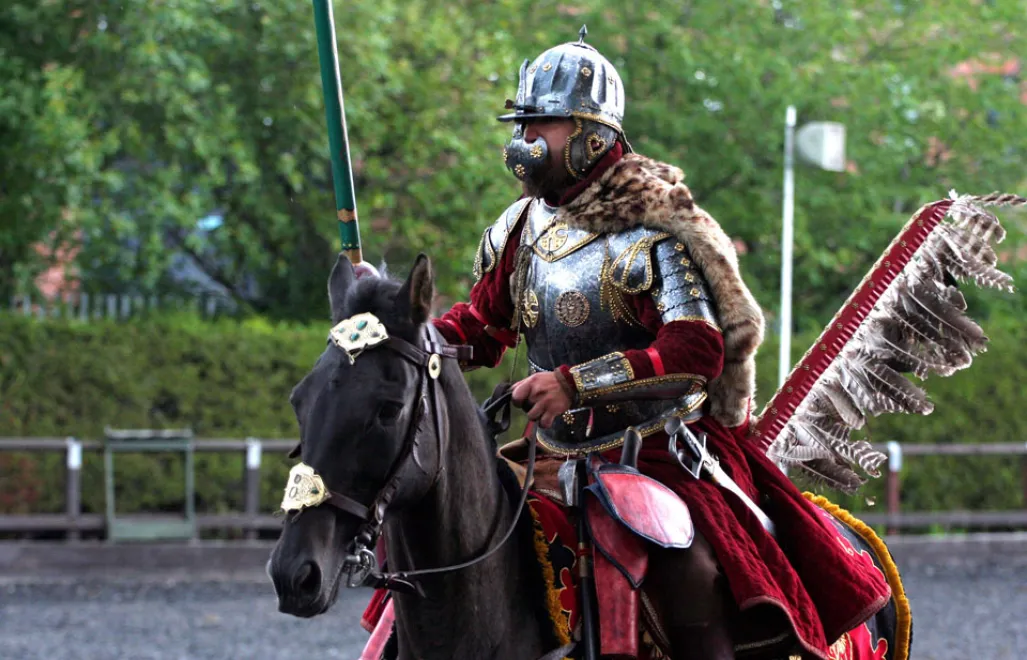Polish King Jan III Sobieski's army saves Europe in the famous Battle of Vienna 334 yrs ago
Three hundred and thirty-four years ago, on Sept. 12, 1683, troops led by renowned Polish King Jan III Sobieski defeated the Ottoman Empire army commanded by Grand Vizier Kara Mustafa in the Battle of Vienna, thus defending Europe and Christianity against an Islamic deluge.

Jan III Sobieski was born in then Poland's Olesko (today's Ukraine) on August 17, 1629. His historic 1683 victory over the 200,000-strong Ottoman army in the Battle of Vienna is believed to have not only saved Europe and Christianity, but also helped create the croissant and white coffee.
He was the famous King of Poland and Grand Duke of Lithuania from 1674 until his death of cardiac arrest in 1696. Apart from being regarded as an outstanding ruler of the Polish–Lithuanian Commonwealth (see: NOTE), Jan III Sobieski has been considered one of Europe's most prominent historical figures and warriors.
Sobieski took the Polish throne as an experienced fighter against the Ottoman Empire, which enhanced his prowess as monarch, and his 22-year reign marked a relatively peaceful period in the Commonwealth's history. Sobieski was popular among his subjects and was an able military commander, winning wider fame for his victory over Kara Mustafa's army at the 1683 Battle of Vienna, by doing which the Polish King prevented Islam from deluging Europe. The victory also led to the permanent expulsion of the Ottomans from Central and Southeastern Europe. After beating the Turks, King Jan III Sobieski entered the city in triumph, by doing which he surely humiliated Habsburg Emperor Leopold I, who had earlier absconded for fear of his life.
In tribute to Sobieski's victories over them, the Ottomans called him the "Lion of Lechistan", with the Pope praising him as the "Savior of Christendom". Sobieski's name has won more frequent mention in recent years, some observers claiming Europe's present migration crisis resembled the continent's plight during its battles against the Ottoman Empire.
This so-called "Mother of all battles", which saved the European world from ruthless Islamisation and vastly changed the continent's map and geopolitical relations, was to a great degree won thanks to Sobieski's Hussars. The Hussars, Poland's famed and much-feared cavalry between the 16th and 18th centuries, made up a considerable portion of Sobieski's force and dealt the decisive blow in the battle by surrounding the so-called Tuerkenschanze, the Ottoman forces' central position, and then storming it downhill in an 18,000-strong attack considered the biggest cavalry charge in military history.
The Hussars were famed for numerous other victories, most notably the battles of Kokenhausen (1601), Kircholm (1605), Chocim (1621, 1673), Beresteczko (1651) and Lvov (Lviv, 1675). In the 1610 Battle of Kluszyn during the 1605-18 Polish-Muscovite War, Hussar regiments severely defeated a fivefold larger Russian army.
Although heavily outnumbered with 70,000-80,000 soldiers against Kara Mustafa's 150,000, Sobieski's army suffered much smaller losses, with only 3,500 dead and wounded (including 1,300 Polish) against the Ottoman army's 8,000-15,000 dead and 5,000 captured.
Apart from the Battle of Vienna's fateful influence on Europe's geopolitical situation, it interestingly left also distinct culinary traces on the continent, vastly contributing to the introduction of coffee as a drinking beverage. It is said that Vienna's first coffee house was run by Franciszek Kulczycki, a Polish spy who seized large amounts of coffee beans left by the escaping Ottomans. Kulczycki's cafe not only introduced the previously unknown drink to Europe, but also upgraded it by adding milk and creating a mix never tried by either Ottomans or Arabs.
Also Austrian bakers, in order to mark Sobieski's pivotal victory, came up with the concept of a crescent-shaped cake patterned upon Ottoman symbols. The cake soon caught on in France, where it was popularised as a "croissant".
mb/pk
NOTE: The Polish-Lithuanian Commonwealth was a 16th-18th century Polish-Lithuanian state composed of the Crown - Poland - and the Grand Duchy of Lithuania, and considered a precursor to modern democratic systems such as federation or constitutional monarchy. The Commonwealth was a dual state ruled by one monarch, who was simultaneously King of Poland and Grand Duke of Lithuania.
The Commonwealth was one of the biggest countries in 16th/17th-century Europe, at its peak spanning about 1.2 million km2 and with a multi-ethnic population of about 11 million. It was formally established by the Union of Lublin in July 1569. (PAP)






